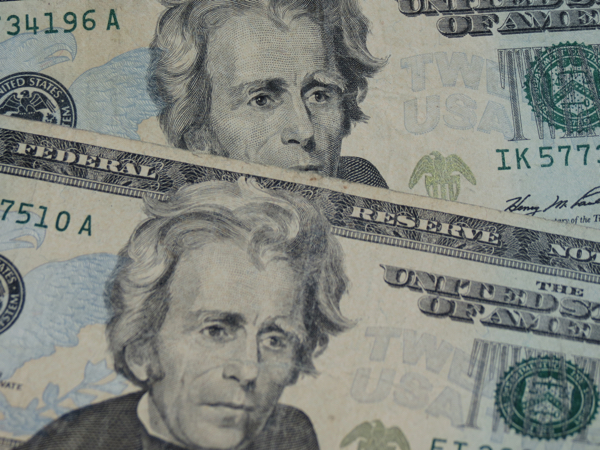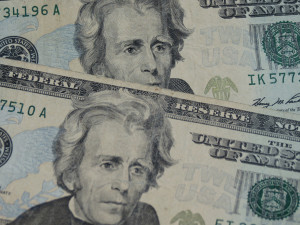
Thursday May 31: Five things the markets are talking about
Global equities are currently receiving some investor appreciation, rebounding from a two-month trough along with the EUR as the political turmoil in Italy that shook financial markets this week shows signs of easing. The ‘big’ dollar has edged lower while Italian bond yields have declined again.
Meanwhile in Madrid, parliament is set to vote Friday (June 1) whether to oust Spanish PM Rajoy and replace his center-right government with one led by the center-left Socialist Party after a Spanish court ruled that Mr. Rajoy’s Popular Party financially benefited from an illegal kickback scheme.
Stateside, a senior N. Korean official is in New York this week to discuss the upcoming summit, proof that the latest indication that an ‘on-again-off-again’ meeting between Trump and Kim Jong-Un may go ahead on June 12 in Singapore.
Amid all this political and trade turbulence, the next focus for investors is tomorrow’s non-farm payroll (NFP) report (08:30 am EDT), the last one before the Fed meets next month, when it’s expected to hike interest rates.
1. Stocks find support
In Japan, the Nikkei share average overnight bounced back from a six-week low as worries over Italy’s political crisis receded. The Nikkei rose +0.83%, while the broader Topix rallied +0.65%.
Down-under, Aussie shares rebounded, led by materials stocks to close higher on Thursday, but health stocks were under pressure, hit by Trump’s talk of “voluntary massive drops” in drug prices. The S&P/ASX 200 index rose +0.5%. In S. Korea, the Kospi added +0.5%.
In Hong Kong, stocks rallied, aided by strong China manufacturing data. The Hang Seng index rose +1.4%, while the China Enterprises Index gained +1.8%.
Note: Data overnight showed that China’s manufacturing sector grew at the fastest pace in eight-months in May (51.9 vs. 51.4e), beating expectations and easing concerns about an economic slowdown even as risks from trade tensions with the U.S and a crackdown on debt point to pressures.
In China, stronger data supported stocks. The blue-chip CSI300 index rose +2.2%, while the Shanghai Composite Index rose +1.8%.
In Europe, regional indices trade mostly higher led by the Italian FTSE MIB, with developments on the Italian political front continuing to be in focus.
U.S stocks are set to open in the ‘black’ (+0.1%).

2. Oil prices ease, eyes on OPEC supply, gold higher
Oil prices have eased slightly overnight following a rally yesterday, as investors eyed a surprise increase in U.S crude oil inventories and looked to a possible rise in output when OPEC and other producers meet on June 22.
Brent crude is down -38c, or -0.5%, at +$77.12 per barrel, after settling yesterday’s session up +2.8%. U.S West Texas Intermediate crude is down -20c, or -0.3%, at +$68.01 a barrel. In the previous session, it settled up +2.2%, at +$68.21 per barrel.
Note: Global inventories have been broadly falling, but U.S crude stockpiles again rallied +1m barrels in the week to May 25 to +434.9m barrels.
Expect the market to take its cue from today’s EIA report (10:00 am EDT) – a day later than usual due to a U.S. public holiday on Monday.
Ahead of the U.S open, gold prices are a tad better bid, as the dollar eased from seven-month highs hit earlier this week, with prices further supported by concerns over Sino/U.S trade. Spot gold has rallied +0.4% to +$1,305.87 per ounce, but is down -0.7% for the month. U.S gold futures for June delivery are +0.3% higher at +$1,305.80 per ounce.

3. Bank of Canada a tad ‘hawkish’
Despite holding their overnight lending rate steady at +1.25%, yesterday’s Bank of Canada (BoC) rate announcement sent strong signals that another rate increase is imminent. The BoC sounded upbeat and tweaked some of the language it used to describe its approach to rate rises. While the BoC had earlier said it would remain “cautious” about future rate changes, that word did not appear in yesterday’s statement. The bank also dropped the words “over time” from a sentence saying higher rates would be warranted, which could suggest that Canadian policy makers are on course for a move at the next meeting.
Elsewhere, the yield on U.S 10-year Treasuries increased +1 bps to +2.86%. In Germany, the 10-year Bund yield fell less than -1 bps to +0.37%, while in the U.K, the 10-year Gilt yield climbed +1 bps to +1.257%. The Italian 10-year yield continues to move away from its recent multi-year high (+3.40%) to test below +2.60%.

4. As risk sentiment improves dollar bulls sell
The continued improvement in risk sentiment is weighing upon the ‘mighty’ dollar; the ‘bears’ are out in force, the more aggressive selling at market, while the weaker is still looking for upticks to participate.
The EUR/USD (€1.1700) continues its rebound from its recent 10-month low print earlier this week (€1.1506). In the Euro session, some investors have decided to book some profit on their EUR positions with Italian political uncertainties looming in the background and after May’s eurozone inflation data came in stronger than expected at +1.9% y/y vs. a forecasted +1.6% rise.
Note: A strong inflation would have otherwise been positive for the common currency if it weren’t for Italy, as the ECB would have likely been more willing to show signs of soon exiting their QE program.
In EM, USD/TRY is trading below $4.50 – a key psychological level. Does this imply that last week’s CBRT interest rate hike is a success?
The market’s confidence in a sufficiently restrictive monetary policy is crucial for the currency’s recovery, and the CBRT must prove this at its meeting on 7 June.
Dollar ‘bulls’ will forgot monetary policy, the key to the lira’s direction will depend on Turkey’s presidential election – what will monetary policy be like after? President Erdogan and his strange monetary policy ideas continue to be the biggest risk factor for the lira. USD/TRY is last up +0.3% at $4.49.

5. U.K consumer credit rebounds, Euro inflation improves
Data this morning shows that the amount that U.K citizens borrowed strongly rebounded last month, after dipping in March.
The amount that U.K consumers borrowed in April jumped to +£1.8B after falling to +£400M in March, which was the lowest in more than five-years. The increase was driven by both credit-card spending and loan uptakes.
Note: The stronger report may strengthen the Bank of England’s (BoE) case for raising its key interest rate sooner rather than later – market consensus was expecting the BoE to hike this month. That sentiment, has not disappeared, its just shifted to August, assuming upcoming data remains strong.
Digging deeper, mortgage lending edged lower on the month to +£3.9B from +£4.0B in March, but remained above the average of the past year.
Other data shows that European inflation continues to improve – France, Italy and Eurozone all improved from month-ago levels and above market expectations.


